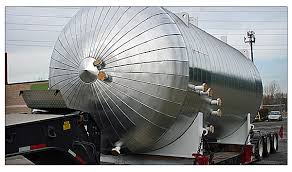High Nickel containing Hastelloy grades corrosion performance
The reason to the development of advanced chemical products and processes is the need for alloy materials that can offer enhanced mechanical characteristics, metallurgical stability and higher corrosion resistance in the severe media. The advanced high corrosion resistant alloys are made from nickel, molybdenum and chromium to prevent corrosion in the severe media in chemical, pollution control, marine and oil and gas plants.
Inconel alloy is developed as a material to prevent general and localized attack. The high  strength nickel super alloys offer supreme service in eliminating general acid attack, combined acid media and to localized corrosion in acid and marine conditions. Inconel grades have supreme metallurgical stability and they can be readily developed and welded.
strength nickel super alloys offer supreme service in eliminating general acid attack, combined acid media and to localized corrosion in acid and marine conditions. Inconel grades have supreme metallurgical stability and they can be readily developed and welded.
Inco weld filler metal is used for wide range of nickel alloys. The versatility of welding product and high alloy content has encouraged the implementation of this material in the aggressive media where welding consumables of Hastelloy C276 and Hastelloy C22 have been discovered to be unfit. The performance of materials in preventing acid corrosion, combined acid media and localized corrosion in acid and marine conditions is evaluated. The comparison of different welding methods on the corrosion service of the nickel-chromium-molybdenum alloys is also made.
Corrosion resistant materials
Over the long time, high corrosion resistance alloys Inconel 625 plate and Hastelloy C276 plate have provided supreme service for systems in chemical plants, power production, pollution control, marine and similar other applications. The reason to the development of advanced chemical materials and enhanced procedures is the need of new materials. This demand has been met by the development of Hastelloy C-2000 that increasingly prevents corrosion and is a security material in the conditions where stainless steels usually fail. These alloys offer supreme benefits such as higher life cycle service, better reliability, nominal maintenance and decreased downtime cost.
Constituents
Potential alloying elements such as nickel, chromium, molybdenum and various elements are essential for different applications that demand high corrosion resistance. Chromium prevents attack in oxidizing media whilst molybdenum enhances resistance in the reducing media. Molybdenum and chromium together enhance resistance in the localized corrosive media. Moreover tungsten also increases alloy’s potential to withstand localized attack.
Corrosion resistance of Hastelloy C276, Hastelloy C22, Inconel 625 and Hastelloy C2000 shows how they change with acid temperature, concentration and mixture. Inconel grade provides supreme corrosion resistance, flexibility and versatility in preventing attack in the diverse environments. It is essential for a material for use in the specific application media that involves oxidizing and reducing conditions. Alloy testing is crucial to choose a material for service in the complex service media in the operation site or in lab test that is almost identical.
Localized corrosion
Localized attack is one of severe failure types in stainless steels. It is less predictable than general corrosion type and more specific to material’s functionality. PREN is calculated by following the chemistry of alloy to conclude the relative pitting resistance potential of materials. High alloyed material such as Hastelloy C-2000 has adequate alloy content to be fully intact of pitting and crevice attack up to 85oC. Above this limit, the solution gets excited and ruptures.
A severe oxidizing chloride test is conducted to determine the influence of composition on the localized corrosion prevention of advanced nickel alloys. For this a Green Death Solution is used that contains 11.9% sulphuric acid + 1.3% HCl +1% FeCl3 +1% CuCl2 to describe the corrosion resistance by stainless steel grades and nickel alloys. It is found that Hastelloy grades offer stable service up to 135oC.
Seawater
Attack on Nickel-Chromium-Molybdenum grades is very nominal in the stable and running seawater. The alloys containing high nickel content are highly intact from stress corrosion cracking in chloride waters that otherwise usually affect stainless steel 300 series grades.
The alloys having PREN above 40 prevent crevice attack in marine water. Although in the severe crevice media like marine water quenched plate heat exchangers that have several of tight crevices, Hastelloy grades such as type C276 and C22 offer adequate service. It is found that the largest corrosion depth in crevice condition in quiescent seawater at 29oC for six months is in context to PREN. In the average aggressive crevice media Inconel 625 and Hastelloy C-276 offered satisfactory service in the marine environments.
Welded materials in marine environments
Inconel alloy 625 has PREN above 40 that makes it fit for use in the marine conditions. It is widely utilized as a weld overlay on carbon steel products to enhance their corrosion resistance while keeping the cost low. Meanwhile the materials having high PREN are also fit for service in the aggressive seawater applications.
Crevice attack analyses were performed on the various materials at the high temperature natural marine conditions at 60oC for two months in the stagnant seawater. Grade C276 and C22 were found to be fully resistant to general corrosion in marine environments.
Sulfide stress cracking
Sulfide stress cracking is a very aggressive type of attack that is seen in oil and gas units. Normally, alloys containing high nickel, molybdenum, chromium, tungsten and niobium perfectly prevent stress corrosion cracking. Traditionally alloy 625 has been extensively implemented for service in the oilfield media.
Heat stability
The Nickel – Chromium-Molybdenum alloys are normally designed to serve in the aqueous media at temperatures above 500oC, although the alloys exposed to elevated temperatures during welding or probable heat processing services of components or vessels may be doubtful when they need to prevent intergranular corrosion.
Elevated point phase development after the welding process or inadequate heat processing can cause quick attack, specifically around the grain limits that is named as sensitization. Here Hastelloy C276, C22 and Hastelloy C2000 offered average service.

